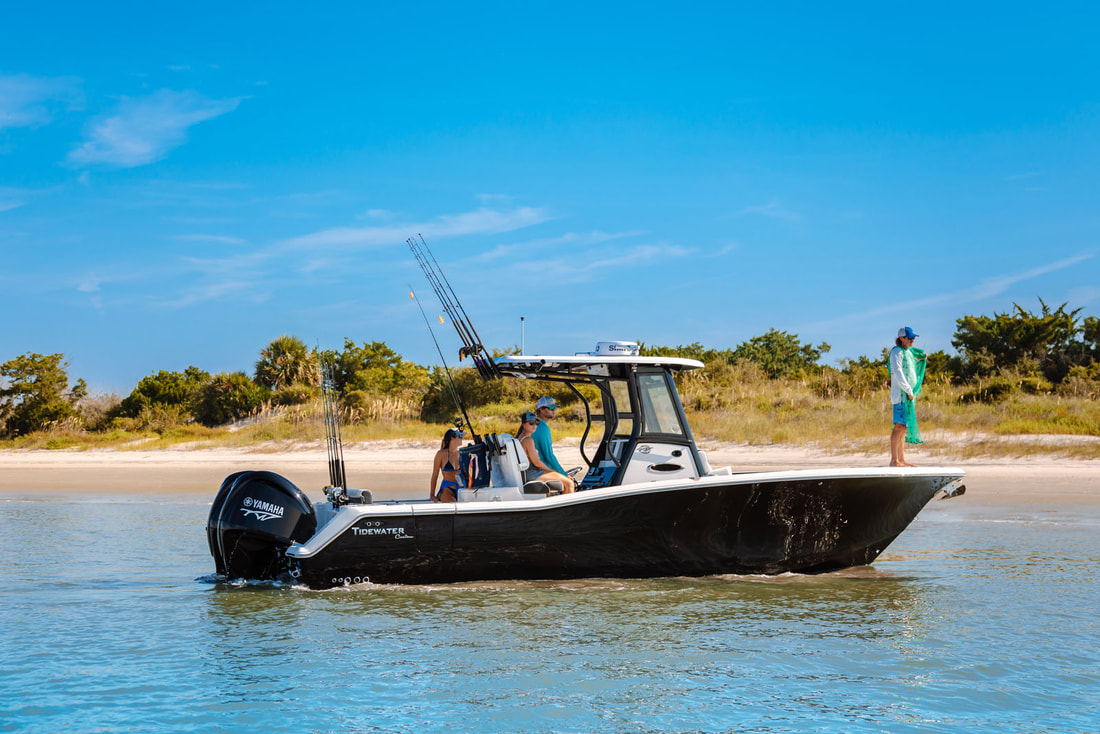Hydrafoil for Boats: Comprehensive Guide to This Maritime Innovation
Hydrofoil technology has revolutionized the boating industry, offering a combination of speed and efficiency that few other types of boats can match. At the heart of this innovation lies the hydrofoil itself, a winglike structure that provides lift as a boat's speed increases, elevating the hull above the water surface and dramatically reducing drag. The result is a smoother, faster, and more fuel-efficient ride, making hydrofoil boats highly sought after in the world of maritime transportation.
The history of hydrofoils dates back to 1898, when Italian inventor Enrico Forlanini pioneered the concept with his ladder foil system. Since then, hydrofoils have been used in various applications, including US Navy watercraft, superyachts, racing boats, and ferries (Boater Pal). As advancements continue to be made in the field, hydrofoils are becoming an increasingly popular choice for boating enthusiasts and commercial operators alike, drawn to their unique combination of speed, efficiency, and cutting-edge design.

Hydrofoil Technology and Science
Hydrofoil technology is a marvel that revolutionizes marine transportation by harnessing the principles of hydrodynamics and aeronautics. This section will explore the influence of aircraft wings, the reduction of hydrodynamic drag, and the various foil design and configurations in hydrofoil boats.
Aircraft Wings Influence
Similar to how aircraft wings generate lift, hydrofoils work with the same principle in water. When a hydrofoil-equipped boat moves through the water, the underwater fin's wing-shaped surface creates a lift, which raises the boat above the water surface, significantly reducing drag and increasing efficiency as a result (Britannica) .
Hydrodynamic Drag Reduction
One of the main advantages of hydrofoil technology is its ability to reduce hydrodynamic drag. Hydrodynamic drag is the force exerted by water on a moving boat, impeding its forward motion. As the hydrofoils lift the boat above the water, the hull's contact area with the water is minimized, and consequently, the hydrodynamic drag is significantly reduced. This allows hydrofoil boats to achieve higher speeds and improved fuel efficiency, making them an appealing choice for various marine applications (Boating Mag).
Foil Design and Configuration
There are two primary types of hydrofoil boats: surface-piercing and fully submerged, both having their unique foil designs (MaritimePage). Surface-piercing hydrofoils employ wings that partially submerge in water, creating lift when there is sufficient boat speed. Fully submerged hydrofoils, on the other hand, have wings completely underwater, allowing the boat to achieve lift even at lower speeds (MIT).
Moreover, hydrofoils can have various shapes, such as V, T, or U forms, depending on the specific requirements of each application. The choice of hydrofoil shape can affect the lift and stability characteristics of the boat. Properly-designed hydrofoils are crucial for achieving maximum performance and efficiency in a hydrofoil boat.

Hydrofoil Boat Types and Uses
Hydrofoil boats are a versatile and efficient option for various water-based activities. They use advanced technology to lift the hull above the water, reducing drag and increasing speed. This section delves into the different types of hydrofoil boats and their uses, focusing on recreational boats, racing boats, and electric hydrofoil boats.
Recreational Boats
Hydrofoil technology has found its way into recreational vessel designs, offering a smooth, efficient, and exciting sailing experience for enthusiasts. Boats equipped with hydrofoils provide enhanced speed and fuel efficiency, making them ideal for leisurely cruises and fishing trips. The winglike structure that supports the boat creates lift as the speed increases, improving the overall performance of the vessel (Boater Pal).
Racing Boats - America's Cup
Hydrofoil technology is a game-changer in boat racing, particularly in the America's Cup, the oldest international sporting trophy contest. As hydrofoil boats achieve exceptional speed and agility, they have been adopted by numerous racing teams, significantly transforming the racing landscape. The use of hydrofoils enables these racing boats to reach unprecedented speeds, making the sport even more thrilling and competitive (Daily Boats).
Electric Hydrofoil Boats
Combining hydrofoil technology with electric power has led to the development of eco-friendly and high-performance boats. Electric hydrofoil boats offer a silent, emission-free experience without compromising on speed and efficiency. These vessels are gaining popularity due to their minimal environmental impact and operational advantages. Their efficient use of energy and reduced noise make electric hydrofoil boats an increasingly popular choice for water-sports enthusiasts and environmentally conscious individuals (Maritime Manual).

Components and Propulsion
Hydrofoil boats rely on advanced engineering and design principles to create a smooth and efficient riding experience. In this section, we'll discuss the key components of hydrofoil boats, including hull design, outboards and electric motors, propellers, and controls.
Hull Design
The hull of a hydrofoil boat plays a significant role in its performance. A hydrofoil boat features a lifting surface (foil) attached to the hull, which helps to lift the boat out of the water at high speeds, reducing drag and increasing efficiency (Maritime Manual). Additionally, some hydrofoil designs incorporate a main hydrofoil located aft amidships that lifts approximately 40% of the hull's weight out of the water for better performance and fuel economy (Boating Mag).
Outboards and Electric Motors
Outboard motors are the most commonly used propulsion system for hydrofoil boats. These motors are not only more fuel-efficient, but they are also less harmful to the surrounding marine life (Boating Mag).
Electric motors are another alternative for propulsion in hydrofoil boats. They offer a clean, quiet, and environmentally friendly form of propulsion. However, the limited range of battery-powered electric systems, combined with the increased drag of hydrofoils, results in a reduced operating range (Wave to Wave).
Propellers and Controls
Hydrofoil boats use specialized propellers designed to optimize efficiency and minimize drag. The propellers work in conjunction with advanced control systems to maintain stability and maneuverability while the boat is in motion.
An automatic control system is required for hydrofoils to manage flying height, foil pitch, and the smoothness of the ride. This "autopilot" system allows the foil to move in and out of the water safely, preventing the boat from slamming back into the water after it has lifted off (Boater Pal).
High-tech controls are essential for managing the boat's performance, ensuring the proper positioning of hydrofoil vessels, and offering a more stable and responsive ride than traditional boats.

Performance and Advantages
Speed and Efficiency
Hydrofoil boats can achieve higher speeds compared to traditional boats due to their reduced drag. As the boat accelerates, the hydrofoil lifts the hull out of the water, allowing it to move with less resistance. This results in a smoother and faster ride. The use of hydrofoils also improves overall efficiency, as they utilize the available horsepower more effectively.
Handling and Stability
Hydrofoils contribute to better handling and stability of the boats. As the hull is raised out of the water, it becomes less susceptible to waves or choppy conditions. This means that the boat maintains its course more effectively and is less likely to be pushed off course by external factors like crosswinds or water currents. Additionally, the hydrofoil's inherent design helps to counteract any rolling or pitching motion, providing a more stable and comfortable ride for passengers.
Fuel Mileage and Range
Since hydrofoils significantly reduce drag, boats using this technology often experience improvements in fuel mileage and range. Such boats require less energy to maintain higher speeds, which can lead to savings in fuel consumption. This improved fuel efficiency can also result in an increased range for the boat, allowing it to travel greater distances on a single tank of fuel.

Challenges and Disadvantages
While hydrofoil boats offer impressive performance and efficiency benefits, they also come with a few challenges and disadvantages that potential owners need to consider.
Rough Water Conditions
One of the main drawbacks of hydrofoil boats is their difficulty in handling rough water conditions. These boats are designed to achieve optimal performance in calm waters. In rough waters, hydrofoils can struggle to maintain a smooth and stable ride, potentially leading to an uncomfortable experience for passengers as well as decreased efficiency(Boater Pal).
Maintenance Costs
Hydrofoil boats can be more expensive to maintain than traditional boats due to the complexity of their design and the need for specialized expertise. The hydrofoil system requires regular inspection and upkeep to ensure proper functioning and a safe ride. Additionally, any repairs or replacements to the hydrofoil components can be costly(BoatBlurb).
Porpoising and Other Issues
Hydrofoil boats can sometimes experience a phenomenon called porpoising, where the boat oscillates up and down in the water, causing an uncomfortable ride for passengers. This issue often arises when hydrofoil boats are operating at speeds outside their optimal range(Boater Pal). Furthermore, hydrofoil boats require increased precision and skill to operate safely, as compared to traditional boats. A sudden, sharp turn could cause the hulls to dig in and result in a loss of control(Boating Mag).
In summary, hydrofoil boats offer remarkable advantages but come with their own set of challenges and disadvantages. Prospective owners should carefully weigh these factors when considering a hydrofoil boat.

Hydrofoiling Around the World
Hydrofoils have been making waves in the boating world, with their impressive ability to increase speed, reduce drag, and improve efficiency. In this section, we'll take a closer look at some notable hydrofoil boats and explore the development of this technology in Hong Kong.
Notable Hydrofoil Boats
One example of a high-performance hydrofoil boat is the Candela C-7, the world's first hydrofoiling electric boat. It showcases the potential of hydrofoils in delivering not only speed but also environmental benefits, as it helps reduce the carbon footprint of boating.
Another noteworthy hydrofoil boat is the 130-foot hydrofoiling sailboat that can reach speeds of over 50 knots. This exceptional performance is possible due to the decreased drag that results from lifting the hull out of the water with hydrofoils.
Moreover, large hydrofoiling ferries have been designed to exceed 45 knots, providing an efficient and speedy mode of transportation for passengers across various water bodies.
Hydrofoil Development in Hong Kong
Hong Kong has been at the forefront of hydrofoil development, with companies like Boater Pal contributing to this innovative technology. The city's island-dotted waters provide an ideal environment for the growth and application of hydrofoil boats, as high-speed transportation options are essential for connecting the many islands and mainland destinations.
Several ferry companies in Hong Kong have embraced hydrofoil technology, introducing hydrofoil ferries into their fleets. These ferries provide significantly faster transit times between popular destinations like Hong Kong Island and Macau, compared to conventional ferries.
As the development and adoption of hydrofoil boats continue in Hong Kong and around the world, we can expect to see even more advancements and wider application of this amazing technology, transforming the future of marine transportation.
Charlie is Editor-in-Chief of Sea Magazine






